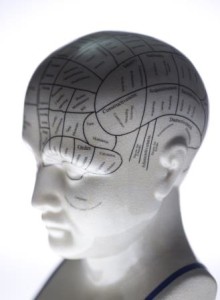What role does the amygdala play in our anger response? Clinical Psychologist Dr David Wells explains …
Our bodies contain lots of energies, such as physical energy and psychological energy.
Most human beings are good at training and exercising their physical self; but our psychological energies also need training and exercising.
We particularly need to learn how to cope with, deal with, and exercise our negative psychological energy.
The Difference between Emotions & Feelings
An emotion is the execution of a complex series of actions or changes. For example, a facial change like smiling or an internal change, like our heart rate increasing.
There are also molecular changes that release chemicals like dopamine and adrenalin into the blood stream. In evolutionary terms an emotion was engaged when there was the possibility of a threat (being killed) or an opportunity for food or sex. Incidentally, these changes have been modified by our life experiences.
A feeling is the process of perceiving what is going on within the organism when that organism is “having” an emotion. Our emotions can alert us to a threat (attack) or opportunity (food or sex). This happens unconsciously until we “feel” it.
Our felt emotions can have a great deal of impact on our behaviours. However it is not necessary to always behaviourally respond to our unconscious emotions or feelings; fortunately we have control systems within the brain that help us control our behaviours.
Emotions can be seen as the driving forces behind what we do, say, think and how we perceive the world around us. They are largely automatic but are rooted in our moods and temperament. They can be seen as the root to many of our problems in our lives, because if our emotions are automatic they can have control over us.
If we can achieve some emotional awareness, we may have some control over the effects of our emotions on us. Moods and temperament are more long-running and have more diffuse causes, which may not be known.
Why bother learning how to better Manage our Emotions?
Negative emotions have negative effects on our bodies and on our lives. Sadness can lead to loss of energy, muddled thinking and poor decision-making; anger and irritability can lead to lowered self-esteem, substance abuse, relationship problems and loss of job.
Negative emotions (fear, sadness, anger, shame, guilt) narrow our thinking and our reactions to perceived danger, threat or fear.
Neutral emotions such as surprise and confusion just tell us that we need more data upon which to make our decisions, while positive emotions (happiness, joy, love, gratitude) allow us to be more creative, imaginative and innovative, and to create more options and possibilities.
What about Anger?
Anger is a felt negative emotion or feeling state which is perfectly normal; everyone experiences anger. Some animals experience anger.
Have you ever said: “You make me so angry!”, or “I was so angry about that”? That is your acknowledgement that the recognised situation has had a negative effect on you by the way of a negative emotion and feelings we call anger.
Anger can start off as a frustration, maybe wanting something but not getting it. Something can get in the way of what we want and that frustrates us. We may want to be safe, loved, listened to, appreciated, acknowledged, respected or understood. It may any number of wants that get thwarted and cause frustration. It has been found that an average person experienced 20 frustrations a day ranging from very small frustrations to very big. So with all these day-to-day frustrations it is not surprising that we get what we all call “angry” from time to time.
Other “angry” words are: aggravated, annoyed, bothered, bugged, cranky, disappointed, disgruntled, displeased, enraged, exasperated, frustrated, furious, impatient, incensed, indignant, irritated, irate, irked, mad, outraged, pissed off, resentful.
Common Sources of Anger
Every day or common causes of anger can include:
- traffic jams
- arrogant or rude people
- being yelled at
- people who waste your time
- having to wait
- feeling like you have been “used”
- being lied to
- unreasonable taxation
- people who cut in line
- people doubting what you say
- being unjustly punished
- being wrongfully accused.
As a result of being frustrated with our wants, needs and desires we end up blaming others for blocking us from getting what we want.
We find that we then want to punish those that block us, and we direct our frustration at those around us – this is the external expression of our felt negative emotion. Some could see it as being aggression. It can all happen very fast; or rather slowly. We can be aware of it all happening, or it can happen with no awareness on our part whatsoever.
Anger is not Aggression
Anger is not aggression and anger does not need to lead to aggression. As human beings we have the ability to control our expressed behaviours. We may not wish to control them, but we can should we so choose.
Anger management is really learning how to control our expressed emotions. We need to learn about anger, stress management techniques, assertiveness tools, and about our emotional mind in general (why single out anger?). We can learn what replaces anger if we are able to decrease the volume on angry negative thoughts, and some would suggest we need to use humour to replace or decrease our negative thinking.
Anger and the Amygdala Hijack
 We do have control over our behaviours. Our pre-frontal cortex takes control of our impulses (amongst many others functions). The amygdala (meaning almond-shaped structure) is bilaterally in the temporal lobe (if you draw a line from your eye to the back of your head and bisect that line with one from your ear going across your head, that is the location of your amygdala).
We do have control over our behaviours. Our pre-frontal cortex takes control of our impulses (amongst many others functions). The amygdala (meaning almond-shaped structure) is bilaterally in the temporal lobe (if you draw a line from your eye to the back of your head and bisect that line with one from your ear going across your head, that is the location of your amygdala).
In research, the amygdala is most often associated with fear. The amygdala obtains input information from the many sensory systems that process the outside world for us.
If triggered, the amygdala can use that information to then influence our output responses. The output responses tend to be in the freeze, flight or fight domains.
The amygdala is also very good at creating associations. For example, if there is a sound and then pain, the association of pain and that sound will be formed.
The amygdala is particularly concerned with threat and the fear of attack and harm. Once triggered, it gets dopamine and adrenalin released into the blood stream, increases blood flow and basically gets us ready to deal with the perceived threat.
The neo-cortex (top 2-4mm layer) of the brain can handle lots of information (on topics such as motor commands, spatial reasoning, conscious thought and language) but when this information processing capability is hijacked by the amygdala, because of a perceived threat or opportunity, the amount of information it can handle greatly decreases. From handling complex problem-solving to “Do I eat it or does it eat me?” all in the space of .85 milliseconds.
When people say they cannot think when angry – blame the amygdala!
If you are interested in finding out more about techniques to help you better manage anger and other strong negative emotions, please make an appointment with me soon.
 Author: Dr David Wells B Psych (Hons), Dip Prof Couns, D Psych (Clin Geropsychology).
Author: Dr David Wells B Psych (Hons), Dip Prof Couns, D Psych (Clin Geropsychology).
David is a Clinical Psychologist, with a keen interest in working with older people and their families. He strives to provide a safe environment for his clients to explore their issues and, with assistance, develop new techniques which will help them change their unproductive behaviours. The aim is to have a happier life that assists people reach their relationship, personal and life goals.
Dr David Wells is currently on extended leave. If you would like to book with an alternative clinician with similar expertise, you can call Vision Psychology Brisbane on (07) 3088 5422.